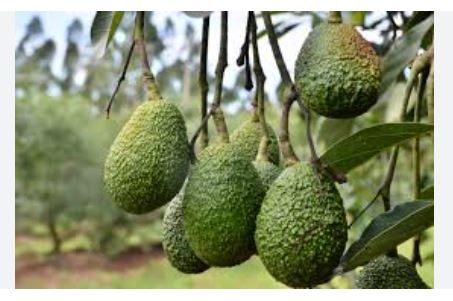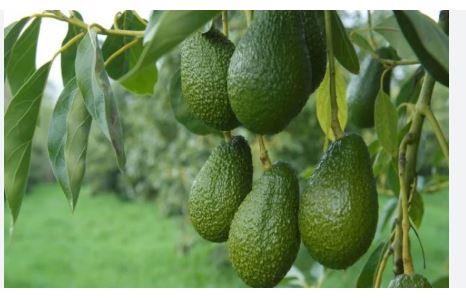
Hass avocados belong to the species Persea americana, a member of the Lauraceae family, which also includes laurel, cinnamon, and bay leaves. Botanically, the avocado is classified as a berry, featuring a single large seed surrounded by fleshy pulp, though its culinary use often aligns more with vegetables. The Hass cultivar is a hybrid, with genetic studies revealing it’s roughly 61% Mexican and 39% Guatemalan in origin, blending traits from these ancestral races. This mix contributes to its resilience and rich flavor, distinguishing it from pure Mexican, Guatemalan, or West Indian varieties. First documented in the 1920s, it’s now the dominant avocado cultivar globally, thanks to its commercial viability and taste.
The origin story of the Hass avocado begins with Rudolph Hass, a Southern California mail carrier and amateur horticulturist. In 1926, Hass planted seeds he’d purchased from a local grower, A.R. Rideout, in La Habra Heights. One stubborn seedling resisted grafting with the then-popular Fuerte variety, and rather than discard it, Hass let it grow. The tree bore fruit with dark, bumpy skin and a creamy, nutty interior—unlike anything on the market. He patented it in 1935, the first U.S. patent for a tree, and partnered with nurseryman Harold Brokaw to propagate it. That single “mother tree” lived until 2002, when it succumbed to root rot, but its legacy spans millions of Hass trees worldwide.
Identifying a Hass avocado is straightforward. Unripe, its skin is a vibrant green with a pebbly texture; as it ripens, it darkens to a purplish-black, yielding slightly to gentle pressure. The fruit typically weighs 200 to 300 grams (7-10 ounces), with an oval to pear-shaped form. Inside, the flesh transitions from pale green near the skin to a deeper yellow-green closer to the seed, offering a buttery consistency due to its high oil content (around 18-23%). This richness sets it apart from smoother-skinned varieties like Fuerte or the less oily West Indian types, making it a favorite for its depth of flavor and texture.
Hass avocados thrive in USDA Hardiness Zones 9 to 11, preferring warm, subtropical climates with well-drained soil and plenty of sunlight. They’re sensitive to frost, tolerating temperatures down to about 25°F (-4°C) before suffering damage, though mature trees fare better than young ones. Southern California, where 95% of U.S. avocados are grown, provides an ideal microclimate, as do parts of Mexico, Chile, and New Zealand. Unlike some varieties, Hass trees can bear fruit year-round in optimal conditions, though peak seasons vary by region—spring to fall in California, and late summer to early winter in Mexico, the world’s top producer.

Availability reflects this adaptability. In the U.S., Hass avocados dominate markets, accounting for over 80% of global consumption and 95% of California’s crop. They’re harvested mature but unripe, with a dry matter content above 23%, then ripened off the tree, often with ethylene gas to speed the process. This allows year-round supply, with Mexico filling gaps when California’s season wanes. For consumers, they’re a constant presence, though quality peaks during regional harvests—April to September in California, or September to February from Mexico. Their thick skin aids shipping, ensuring wide accessibility.
Culinary uses of Hass avocados are vast, driven by their creamy texture and nutty taste. Guacamole is the iconic application—mashed with lime, salt, and spices, it’s a staple in Mexican cuisine and a global snack favorite. Sliced or cubed, they elevate salads, sandwiches, and toast, where their richness pairs with acidic or salty flavors like tomatoes or feta. Blended into smoothies or spreads, they add healthy fats (mostly monounsaturated) and nutrients like potassium and B vitamins. Unlike some fruits, they don’t cook well—heat can turn them bitter—but their versatility raw makes them a kitchen powerhouse, from sushi rolls to desserts in some cultures.
Cultivation of Hass Avocados
Climate Requirements
Hass avocados thrive in subtropical climates, ideally within USDA Hardiness Zones 9 to 11. They need temperatures between 60°F and 85°F (15°C to 29°C) for optimal growth, with mature trees tolerating brief dips to 25°F (-4°C). Frost is a major threat, especially to young trees, so growers in marginal zones use windbreaks or heaters during cold snaps. Regions like Southern California, central Mexico, and parts of Chile provide the warm, frost-free conditions Hass demands.
Soil Preferences
Well-drained soil is critical, as Hass avocados are prone to root rot (caused by Phytophthora cinnamomi). Sandy loam or volcanic soils with a pH of 6.0 to 6.5 are ideal, allowing water to percolate without pooling. Heavy clay soils are avoided unless amended with organic matter or raised beds are used. Soil tests ensure proper drainage and nutrient balance before planting.
Site Selection
Sloping land (5-15% grade) is preferred to prevent water accumulation, though flat areas work with proper irrigation management. Full sun exposure is essential—Hass trees need at least 6-8 hours daily for photosynthesis and fruit production. Windy sites require natural or artificial barriers (e.g., hedges or fences), as strong gusts can damage blossoms and fruit.
Tree Propagation
Hass avocados are typically propagated by grafting onto rootstocks, not grown from seed, to ensure consistent fruit quality. Rootstocks like ‘Zutano’ or ‘Duke 7’ are chosen for disease resistance and vigor. Grafting occurs in nurseries, with scions from certified Hass trees joined to rootstocks, then grown for 12-18 months before transplanting. This preserves the cultivar’s traits, unlike seed-grown trees, which vary genetically.
Planting
Trees are planted 15-20 feet apart (4.5-6 meters) in orchards, allowing room for canopy growth, though high-density setups (10-12 feet) are emerging with pruning. Spring is the best planting season in most regions, giving roots time to establish before summer heat or winter chill. Holes are dug twice the root ball’s size, amended with compost, and staked to support young trees against wind.
Irrigation
Hass avocados need consistent moisture but hate waterlogged roots. Drip irrigation or micro-sprinklers deliver 20-50 gallons (75-190 liters) per tree weekly, adjusted for rainfall and soil type. Young trees require more frequent watering (2-3 times weekly), while mature ones tolerate less. Overwatering risks root rot, so soil moisture sensors or tensiometers guide precision.
Fertilization
Nitrogen is key, applied at 1-2 pounds (0.45-0.9 kg) per tree annually, split into spring and summer doses. Zinc and potassium supplements address common deficiencies, especially in alkaline soils. Organic options like compost or manure work, but synthetic fertilizers (e.g., 10-10-10 NPK) are common. Leaf analysis every 1-2 years ensures nutrient balance, avoiding over-fertilization, which can burn roots.
Pollination
Hass avocados are self-fertile but benefit from cross-pollination. They exhibit “Type A” flowering, where flowers open as female in the morning, close, then reopen as male the next afternoon. Planting a “Type B” variety (e.g., ‘Fuerte’ or ‘Bacon’) nearby boosts fruit set, as bees transfer pollen between overlapping bloom cycles. Orchards often introduce hives during flowering (February-May in California).
Pruning
Minimal pruning maintains Hass trees, focusing on removing dead wood, crossing branches, or suckers below the graft line. Young trees are shaped into a vase-like structure for sunlight penetration, typically in the first 2-3 years. Mature trees (5+ years) may be thinned every few years to prevent overcrowding and encourage fruiting, with cuts made post-harvest to minimize stress.
Pest and Disease Management
Key pests include avocado thrips, mites, and fruit borers, controlled with integrated pest management (IPM)—natural predators like lacewings or targeted insecticides. Root rot is the primary disease, mitigated by resistant rootstocks and avoiding overwatering. Persea mites require monitoring, with sulfur sprays used if infestations spike. Regular scouting keeps issues in check.
Fruit Development
After pollination, Hass fruit takes 9-12 months to mature, staying on the tree until harvested. They don’t ripen on-tree, so growers track dry matter content (23% minimum for Hass) to determine maturity. In California, this spans April to September; in Mexico, it’s year-round with staggered blooms. Fruit size varies (6-12 ounces), influenced by water, nutrients, and thinning if yields are too heavy.
Harvesting
Hass avocados are hand-picked when mature but firm, using clippers to cut stems and avoid skin tears. Harvest timing depends on market demand and oil content, tested via lab samples or field kits. Workers use ladders or poles for taller trees, collecting fruit into bins for transport. Unlike other crops, timing is flexible since fruit stores well on-tree for weeks or months.
Post-Harvest Care
After picking, avocados are cooled to 40-50°F (4-10°C) to slow respiration, then graded for size and quality. They’re ripened off-tree, often with ethylene gas in controlled rooms (3-7 days at 68°F/20°C), turning skin from green to black. Proper handling prevents bruising, critical for their thick but delicate skin. Trees can live 50+ years, yielding 100-200 pounds (45-90 kg) annually at peak productivity.